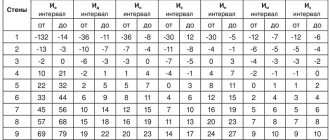Determining Rotter's Locus of Control
What is locus of control? This is a personality trait in which a person explains his successes and failures by the influence of external or internal factors. Translated from French, locus is location, and contrôle is verification. In psychology, the concept of locus of control suggests that people look for the reason for everything that happens either in the environment (a bad streak, fate, the machinations of ill-wishers) or in their inner world. This is how they justify all their actions.
The term was introduced into science by Julian Rotter. That is why the phenomenon is called Rotter's locus of control. It is also called cognitive orientation. It shows whether an individual controls his own life or relies on circumstances.
Pole "Self"
The desire to demonstrate and prove one’s own importance in the outside world. Such a person cares about satisfying his interests, not paying attention to the opinions of others. For such a person, it is common to embellish information about his loved one and present himself on the positive side in front of other people.
The search for information and making certain decisions is focused on personal gain. Information for making a specific decision is perceived only in one’s own vision; the opinions of others are not taken into account at all. Decisions should not infringe on one’s own interests, and everything else is completely unimportant.
One can highlight the obvious desire of such a person to live by his own interests. Inflated self-esteem greatly influences the drawing up of a life plan. Such a person wants to have much more than he has, and believes that there is no need to work hard to realize his life plans. This opinion greatly influences the timing, since there is no correct assessment of the difficulties encountered on the way to achieving a life goal.
A person with this meta-program is selfish and self-confident. He strives for his goal no matter what and looks for ways to achieve it in various ways, completely disregarding the opinions of others.
This desire manifests itself perfectly in nonverbal communication. Vivid emotions and facial expressions, expressive gestures mainly with the hands, which can sometimes be called theatrical or eccentric. Speech has a huge number of comparisons with oneself or one’s emotional state.
Such people perceive others as a source of resources that can be easily manipulated. The higher the self-esteem of such a person, the more strongly he supports it, and therefore carefully avoids situations that call into question his abilities.
The most difficult stressful situation for such a person will be being ignored by society and not having one’s inflated needs met. But there are also positive qualities that can be expressed by being demanding of others.
Forming a locus of control
Several factors influence the development of Rotter's locus of control:
- personality traits of a particular person;
- upbringing;
- historical moment;
- society.
Depending on them, a person develops a passive or active position towards life. In the first case, he believes that nothing depends on him. And in the second, that he can still change something.
According to Julian Rotter, what one's position will be depends largely on how often a person was punished or praised as a child. He put forward this assumption in 1954. So, if after committing any actions an individual heard only reproaches and humiliation, the attitude will appear in his mind: “I can’t do anything, I have no control over what is happening.” The same thing happens if actions do not bring the expected result.
It turns out that upbringing plays one of the main roles in the formation of one or another type of locus of control. There are 2 examples:
- A child growing up in an authoritarian family, in which mom and dad raise him inconsistently, develops external control. Going with the flow is a habit for him.
- Children whose parents were consistent in their upbringing always take responsibility for their actions upon themselves.
And although the locus of control is formed starting in childhood, it can be changed. You can change your destiny in the same way.
How to independently determine your locus type
Several indicators of the control scale help in determining the locus:
1. “Internality” is general (IO). The higher the percentage of the scale, the greater the person’s conviction that important events in life are a projection onto the result of his actions. You can independently manage events and feel responsible for individual events, or life in general. If the indicator is low, then this indicates a difficult connection between actions and significant life events. Such a person has low confidence in the ability to control the development of events; he believes that this is a random phenomenon or the external influence of other people.
2. “Internality” of achievements (ID). Those with a high level of achievement believe that everything achieved in life is owed only to themselves. People with a low level believe that this is the result of luck in life, a happy accident.
3. “Internality” of failures (IN). A high rate indicates a tendency to self-blame for failures, troubles and suffering. Low is associated with a preference for attributing merit to events, people, or the result of bad luck.
4. “Internality” of family relationships (IR). A high rate is typical for a person who considers himself responsible for his own family events. Low - indicates detachment from problems and involves the removal of responsibility for relatives or family.
5. “Internality” of industrial relations (IP). With a high indicator, a person considers his own achievements to be the most important factor in the formation of collective activities or relationships in a team, in his professional advancement, etc. With a low indicator, it speaks of suspiciousness and dependence on external circumstances - the influence of management, colleagues, luck, failure.
6. Interpersonal internality (IM). A high indicator is manifested in the ability to evoke mutual respect and sympathy, etc. Low - in the category of people who are unable to actively engage in social circles.
7. “Internality” in the sphere of health and the level of illness (IZ). A high result indicates a greater degree of attention to his health: if he is sick, he blames himself and believes that his recovery will depend on his decisions and actions taken. If it is low, he considers health or illness to be the result of an insured event and hopes that recovery depends entirely on the effectiveness of the actions of other people, primarily doctors.
Types of locus of control
As stated above, locus of control is divided into external and internal. Each of them has its own characteristics.
External (external)
The external locus of control is also known as external locus of control. This is a state where a person blames external conditions for everything. He believes that his life is predetermined by someone or something. Therefore, his actions will not change either the present or the future. If he managed to successfully cope with the task, that’s how the circumstances developed. And if failures follow, it’s all the stars’ fault.
A person with an external locus of control does not want to be held accountable for their actions. He transfers it to anything. It could be the people around you, the universe, some abstract forces and much more. There are always culprits for what happens. Such individuals are called externals.
Internal (internal)
Unlike the external locus of control, the internal or internal locus of control encourages people to be confident that control over life belongs only to them. If something doesn’t work out, internals look for the reason in themselves, and not in the circumstances. They evaluate their internal state and abilities. If they praise, it is only themselves. They make themselves objects of criticism.
This type of locus of control by J. Rotter in psychology is called average. A person understands that there are factors from whose influence he cannot get rid of. And he accepts them. But at the same time, he leads a fairly active lifestyle and is not afraid to take responsibility and make decisions. As they say, if life gives you lemons, make lemonade out of them.
Attention! There are no 100% pure internals or externals. A person combines both types of locus of control.
In the process of evolution, according to scientists, women have better developed externality. Men are characterized by an internal locus of control.
Meta-program “Locus of Attention”
This meta-program has three poles and describes the main locus of attention of the individual in his interaction with society and choice of interests. It involves the following processes:
- the main filter of attention in relationships with other people;
- main style and strategy for communicating with others;
- a filter that serves as a base and determines the main interests and hobbies.
To better understand the meta-program, let's take a closer look at its poles.
Types of people
According to psychologists, a person’s self-esteem is closely dependent on his locus of control. Anyone who constantly controls himself internally knows how to objectively assess his abilities and capabilities. He has a correct awareness of himself as a person. So, internals and externals. How are they different from each other?
Pole "Other"
Strives to pay attention to others, emphasizes their importance and significance in society. The focus is on another person, and her interests become more relevant than their own. Such a person is characterized by sacrificing his interests for the benefit of others.
This meta-program involves paying attention to the interlocutor, striving to understand him better and being interested in other people's problems. The search for information, as well as solutions to certain problems, depend on improving relationships with others. Decisions always take into account the interests of others, and the meta-program itself reinforces the desire to adapt to the system and find a compromise in solving certain problems.
Such a person simply needs to do something good for others, and then for himself. The priority of other people is much higher than your own, and therefore, in some cases, your own priorities remain unclear. When making certain promises, a person himself does not imagine how expensive it will cost him to fulfill them, but he promises a lot, since in this way he tries to maintain good relations with others.
A person with such a metaprogram is receptive and attentive to others. He values friendship and cares about his loved ones, and is always ready to help. Expressive facial expressions never look theatrical, and when talking with an interlocutor, such a person is completely imbued with the emotional state of his counterpart. The “other” is completely non-conflict, and therefore tries to smooth out all the rough edges in the conversation and find a life-saving compromise.
Such a person can always support others and protect them; you just have to ask for it, and he will immediately rush to help. He perceives the interests of others as his own, and sometimes even puts them above them. Stressful situations are everyday conflicts, especially among close people.
Personal maturity
Internal locus of control in psychology is a property of a mature person. He doesn't care what other people think about him. He gives an objective, not subjective assessment of his abilities and capabilities. But in this case it is difficult not to go to extremes.
To stick to the golden mean, set goals that you can definitely achieve. Don't try to change circumstances beyond your control. Otherwise, you are guaranteed to experience disappointment, depression, and apathy. And one more piece of advice - analyze your surroundings. If you see instability, do not make far-reaching plans.
Practical benefits:
Knowing your locus of control can give you a very effective tool for improvement, self-analysis, understanding your strengths and weaknesses, changing your attitude towards what is happening to you - a powerful impetus for personal growth and development.
Sometimes a superficial analysis is enough; probably, while you were reading this article, you were able to notice similarities with one of the personality types.
The predominance of external traits indicates the need to learn to take responsibility for what is happening, to be more proactive, and to see one’s contribution in addition to external influences.
People inclined to internality should strive to understand that it is impossible to keep absolutely everything under control, especially since not everyone needs this control, no one is able to know and be able to do everything.
Achieving a balance of these traits is the key to harmonious personal development.
Study methodology
Back in 1966, Julian Rotter developed a technique that allows you to assess a person's locus of control. Many psychologists have tried to modify the test. Today, the classic version and modification of O.P. Eliseev “Cognitive Orientation” is most often used.
Locus of Control Scale
Helps to find out whether a person is internal or external. It also shows how ready he is to see himself, to evaluate his role, successes and failures in a particular area.
The test questionnaire for J. Rotter's locus of control scale contains 44 questions. You must either agree with the statement or refute it.
- Building a career depends on luck, and not on the efforts of the person himself.
- Divorces are a consequence of the fact that partners either do not want or do not know how to compromise.
- Everyone gets sick. It cannot be prevented or predicted.
- Cold, insensitive people are always alone.
- I can realize all my desires if I have luck.
- It is impossible to win sympathy. Whether the person likes you or not.
- Marriage depends on the money and influence of the parents as well as on the spouses themselves.
- I often think that I cannot change anything in my own life.
- The company will develop if all decisions are made by the manager, without relying on the opinions of subordinates.
- When I was at school, my performance did not depend on me, but on external factors, including the mood of the teacher.
- I am confident that I can achieve my plans.
- That I can achieve what I want, carry out all my plans.
- It is better to lead a healthy lifestyle than to go to doctors and take pills.
- If the partners do not agree on their personalities, they need to separate. You can't change anything here.
- My efforts and investments in the business are always appreciated.
- The future of children depends on how their parents raised them.
- There are no happy or unlucky cases, nor does fate.
- In this life, little depends on me, so I don’t make plans.
- While studying at school, my grades depended on my preparation for the lesson.
- When there are quarrels in the family, I consider myself to be to blame, not my partner.
- Most of the people around me are floating with the flow, surrendering to fate.
- I like it when employees can make decisions as well as the manager.
- My illnesses are not a consequence of my lifestyle.
- Mistakes and failures are the result of an unfortunate combination of circumstances.
- A bad manager is the fault of the employees.
- I think that I am unable to change family relationships.
- I just have to want it and I can win the sympathy of absolutely anyone.
- The future life of a child depends not so much on upbringing as on the influence of any external factors.
- Responsibility for everything that happens to me lies solely with me.
- Often I don’t understand why the manager acted this way and not otherwise.
- People who cannot build a career have themselves to blame.
- I know how to get what I need from those around me, including family members.
- Those around me are to blame for my failures.
- Careful child care is protection against many diseases.
- If it's difficult for me, I wait for the problems to be solved on their own.
- Success is not luck or coincidence. This is long, hard work on yourself.
- How happy my family will be depends only on me.
- I sincerely don’t understand why some people like me and others don’t.
- I never ask anyone for help. I always rely on my own strength.
- Often a person's contribution to a particular cause remains underestimated.
- Often, family problems cannot be solved, even if you really want to.
- Responsibility for untapped potential and undeveloped abilities lies with the person himself.
- Most of my victories are thanks to those around me.
- Almost all my failures are my fault, my laziness or lack of knowledge.
Pole "System"
There must be logic in everything. Everything is aimed at the desire to obtain the information of interest and significantly reduce the human factor. This program pole tries to reduce emotional manifestations to a minimum by increasing the logical component of information. Society is viewed by him as nothing more than a source of information, in which there is nothing personal.
The skill of searching and processing information is very significant. Decisions are made only after careful analysis of information. In decisions made, the human factor is always reduced to a minimum, and there are clear reasons, based on an analysis of what is happening.
Planning is carried out slowly, since everything must be carefully analyzed and the special criteria that are necessary for the decision must be determined. Only objective factors are taken into account, and personal ones are completely excluded.
Emotions are mostly suppressed and therefore manifest very weakly. In a normal state, facial expressions are well controlled. Speech is rich in information, stable and consistent. Sometimes there may be speech in which there is no expression of emotion at all. Distance and complete concentration on the meaning of what he himself said is preferred.
The meta-program promotes the development of analytical and organizational skills in a person, and also significantly expands his horizons. It turns a person into a kind of computer with constant tasks to carry out calculations and analyze situations, while excluding or limiting communication with others.
Having a very broad outlook, easily trained and possessing a huge supply of information, people sometimes do not know how to behave in everyday life and solve simple life problems. They are not used to letting others in, and therefore keep them at an optimal distance from themselves. This leads to difficult family situations and intimacy problems. Stressful situations are associated with emotional outbursts and the inability to hide from them.
Identifying a specific meta-program and studying it
To determine a person's meta-program, it is necessary to self-disclose through certain questions asked in the correct form. When studying a meta-program, it is necessary to take into account that its manifestation often depends on a specific situation, so you should not put a certain label on a person.
As stated by scientists, each individual person has several meta-programs, but which one of them predominates and influences life situations will not be found out the first time. Stressful situations also have a significant impact, and in them the definitions will never be accurate.
In conclusion, it is worth saying that skills in knowing others are acquired gradually, with careful double-checking of the information received. To begin with, it is worth highlighting one meta-program, and only then switching to a completely different one. Understanding the psychology of others makes it possible to communicate with them at the proper level, and also helps a person to develop himself and acquire new ways of thinking.
Descriptive Statistics
In Fig. Table 1 shows the distribution of scores on subscales of the locus of causation technique in relation to treatment. The subscales of the external locus of causality with an orientation towards doctors (Fig. 16) and towards others (Fig. 1c) have a normal distribution (p>0.2 according to the Kolmogorov-Smirnov test), which indirectly confirms the representativeness of our sample in relation to the general population. The distribution of scores for the impersonal locus of causation is shifted to the right (Fig. 1d), which reflects the tendency in our culture to delay treatment until the last minute, to begin treatment under fear of complications and in ways that require minimal effort. The distribution of the treatment refusal subscale (Fig. 1e) is shifted to the left, i.e. complete refusal of treatment is not typical for subjects. The distribution of the autonomy subscale is slightly shifted to the right (Fig. 1a) and has a pronounced positive kurtosis. Perhaps subjects tend to make treatment decisions based on their own aspirations, desires and ideas. The interpretation of this distribution feature requires further research.
Autonomous and impersonal loci of causality in relation to treatment are significantly higher in women than in men (p≤0.01). No other gender differences in treatment motivation were identified (Fig. 2).
Due to the fact that our sample was fairly homogeneous in age (there were few subjects between the ages of 30 and 40), and young subjects predominated in it, testing the relationship between indicators on the subscales of the questionnaire and age should be considered as pilot testing, requiring further research. According to our data, the older the subjects, the lower their indicators of dependence of treatment on loved ones (Table 1), and also (at the level of a trend) the lower the indicators on the subscales “Autonomous locus of causation” and “Refusal of treatment”. In our opinion, these differences are quite natural. The younger the subjects, the less experience they have in relation to the treatment of diseases and the more important for them the opinion of loved ones in general. With age and deteriorating health, refusal of treatment becomes an increasingly rare behavior.
10 20 30 40 50 60 70 80 90 Rice. 1a. Distribution of the subscale “Autonomous locus of causation”
Rice.
1b. Distribution of the subscale “External locus of causality with support from others” Fig. 1st century Distribution of the subscale “External locus of causality based on doctors”
Rice. 1 year Distribution of the subscale “Impersonal locus of causation”
Approbation of a method for making decisions regarding treatment
Rice. 1d. Distribution of the subscale “Refusal of treatment”
Rice. 1. Distributions of locus of causation test subscales in relation to treatment:
K-S - Kolmogorov-Smirnov test to check the normality of the distribution, d - the value of the criterion; Lilliefors — Lilliefors test to check the normality of distribution; p—significance level; -normal distribution curve.
Rice. 2. Features of loci of causality in relation to treatment in men and women
Table 1
Comparison of subscales of treatment motivation in subjects younger and older than 30 years (using the Mann-Whitney test)
| Subscales | Average value | |
| under 30 years old | over 30 years old | |
| Autonomous LK | 53,25* | 46,68 |
| External physical therapy with support from others | 26,40* | 22,27 |
| External LC with support from doctors | 30,34 | 29,09 |
| Impersonal personal account | 58,87 | 58,09 |
| Refusal of treatment | 20,33* | 17,41 |
Note. *—p≤0.05.
The average values and standard deviations for men and women according to the method of treatment motivation are presented in Table. 2.
table 2
Means and standard deviations by treatment motivation method
| Subscales | Men | Women | ||
| average | standard.off | average | standard.off | |
| Autonomous LK | 48,36 | 13,79 | 55,18 | 12,21 |
| External physical therapy with support from others | 27,03 | 8,50 | 25,44 | 7,52 |
| External LC with support from doctors | 30,56 | 9,90 | 30,04 | 8,49 |
| Impersonal personal account | 56,72 | 10,72 | 60,02 | 10,60 |
| Refusal of treatment | 20,73 | 7,52 | 19,68 | 6,65 |
| Total score on subscales of agreement with treatment | 162,67 | 34,20 | 170,67 | 30,62 |
Subscale reliability
In table Figure 3 shows Cronbach's alpha coefficients for the subscales of the questionnaire. For the main subscales they are close to 0.8, which is a sufficient indicator. Given the small number of items in the Treatment Refusal subscale, its reliability-consistency can also be considered acceptable.
Table 3
Reliability-consistency of questionnaire subscales
| Subscales | Cronbach's alpha |
| Autonomous LC | 0,79 |
| External physical therapy with support from others | 0,77 |
| External physical therapy with support from doctors | 0,79 |
| Impersonal personal account | 0,76 |
| Refusal of treatment | 0,70 |
Factor structure of the questionnaire
Based on exploratory factor analysis, five factors were identified (Table 4), explaining 44.0% of the variance in the data.
Table 4
Table of factor loadings of the questionnaire (after varimax rotation)
Note. A - autonomous locus of causality; BB - external locus of causality based on doctors; VO - external locus of causality based on others; B - impersonal locus of causality; O - refusal of treatment. Loadings of a variable on its own (specified in the model) factor are highlighted in bold.
Approbation of a method for making decisions regarding treatment
In general, the identified factors correspond to the expected ones, although for a number of items of the impersonal locus of causation, the autonomous locus of causation and the treatment refusal subscale, high factor loadings on other factors are noted. We explain these features by the general low differentiation of decision-making regarding health and illness. The final decision for a particular person can be influenced by several different factors. Many treatment motives that correspond to the autonomous locus of causation (for example, “These procedures are good for health”) are learned over the course of a person's life and correspond in form to external causes (“Doctors say that such procedures are good for health.”
Subscale intercorrelations
In table Figure 5 shows the correlation coefficients (according to Pearson) between the subscales of the method. The subscales of agreement with treatment correlate moderately positively with each other and negatively with the additional scale “Refusal of treatment.” Interestingly, refusal of treatment is not the simple opposite of compliance with treatment and is most strongly associated with the physician-reliant external locus of causation and negatively correlated with the autonomous locus of causation. The greatest correlation is observed between the autonomous and impersonal loci of causation. This may be due to the low proactivity in behavior associated with treatment situations in our culture. Independent decision-making in this case is often not truly autonomous, but becomes random, a choice made “at the last moment.” In no case do the correlations exceed 0.7, i.e. the scales do not duplicate each other.
Test-retest reliability (stability) of questionnaire items
To check the reliability and stability, the values of all items and subscales of the method were correlated in pairs during the first and second (a month later) testing. Test-retest correlations of all items, except four, are significantly positive (R=0.30÷0.70; p≤0.05). For two of these points, a positive correlation was revealed at the trend level (R=0.25÷0.26; p≤0.1), for the other two points the correlation turned out to be insignificant, which may be due to situational fluctuations (statements reflect the anxiety of loved ones about health status of the subjects and regular visits to the doctor).
Table 5
Correlation coefficients between subscales of the questionnaire
Test-retest correlations for all subscales are high and range from 0.42 to 0.63 (/7<0.01). According to the Wilcoxon test, no significant changes were detected between the first and repeated tests for any of the subscales of the questionnaire. Thus, the reliability and stability of the questionnaire is quite high (Table 6).
Table 6
Reliability—stability of questionnaire subscales
| Subscales | Spearman correlations |
| Autonomous LC | 0,64*** |
| External physical therapy with support from others | 0,43** |
| External LC with support from doctors | 0,62*** |
| Impersonal personal account | 0,55*** |
| Refusal of treatment | 0,62*** |
Note. ** -p≤0.01; *** -p≤0.001.










